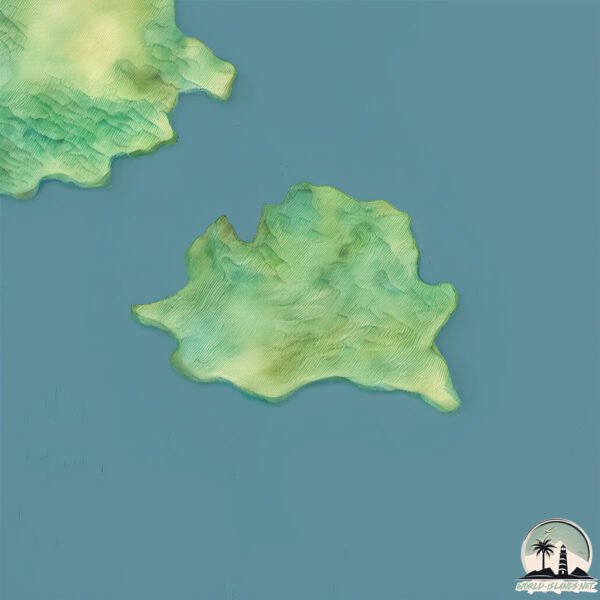Welcome to Angel , a Temperate island in the North Pacific Ocean, part of the majestic Pacific Ocean. This guide offers a comprehensive overview of what makes Angel unique – from its geography and climate to its population, infrastructure, and beyond. Dive into the details:
Geography and size of Angel
Size: 3.087 km²Coastline: 8.9 kmOcean: Pacific OceanSea: North Pacific OceanContinent: North America
Angel is a Small Island spanning 3.1 km² with a coastline of 8.9 km.
Archipel: –
Tectonic Plate: North America – Covers North America and parts of the Atlantic and Arctic Oceans, characterized by diverse geological features and varying levels of seismic activity.
The geographic heart of the island is pinpointed at these coordinates:
Climate and weather of Angel
Climate Zone: TemperateClimate Details: Warm-Summer Mediterranean ClimateTemperature: Warm Summer
Climate Characteristics: Characterized by warm, dry summers and mild, wet winters, typical of coastal areas with abundant sunshine Rain is more common in the winter months, maintaining a moderate climate.
Topography and nature of Angel
Timezone: UTC-08:00Timezone places: America/Los_AngelesMax. Elevation: 145 m Mean Elevation: 61 mVegetation: ShrublandTree Coverage: 76%
The mean elevation is 61 m. The highest elevation on the island reaches approximately 145 meters above sea level. The island is characterized by Plains: Flat, low-lying lands characterized by a maximum elevation of up to 200 meters. On islands, plains are typically coastal lowlands or central flat areas.
Dominating Vegetation: Shrubland
Vegetation: 6 vegetation zones – Very Highly Diverse Island
Infrastructure and Travelling to Angel
Does the island have a public airport? no .
Does the island have a major port? no .
The mean population of Angel is 10 per km². Angel is Gently Populated. The island belongs to United States of America .
Continuing your journey, Sherman is the next notable island, situated merely km away.
The Immigrants of Angel Island | The History You Didn't Learn | TIME
When students learn immigration history in school, they're often introduced to Ellis Island. But they rarely learn about Angel Island, ...
The Immigrants of Angel Island | The History You Didn't Learn | TIME
When students learn immigration history in school, they're often ...
When students learn immigration history in school, they're often introduced to Ellis Island. But they rarely learn about Angel Island, ...
Discovering Angel Island: The Story Behind the Poems
From 1910 to 1940, tens of thousands of immigrants entered the United ...
From 1910 to 1940, tens of thousands of immigrants entered the United States through the West Coast's Angel Island Immigration ...
Angel Island: America's Untold Immigration Story
When you think of America's immigration story, you think of Ellis ...
When you think of America's immigration story, you think of Ellis Island New York... right? Think again, because over 2500 miles ...
United States of America is classified as Developed region: G7: Group of Seven – Major advanced economies, including Canada, France, Germany, Italy, Japan, the United Kingdom, and the United States. The level of income is High income: OECD.
News – Latest Updates and Headlines from Angel
Stay informed with the most recent news and important headlines from Angel. Here’s a roundup of the latest developments.
Loading...
Please note: The data used here has been primarily extracted from satellite readings. Deviations from exact values may occur, particularly regarding the height of elevations and population density. Land area and coastline measurements refer to average values at mean high tide.

